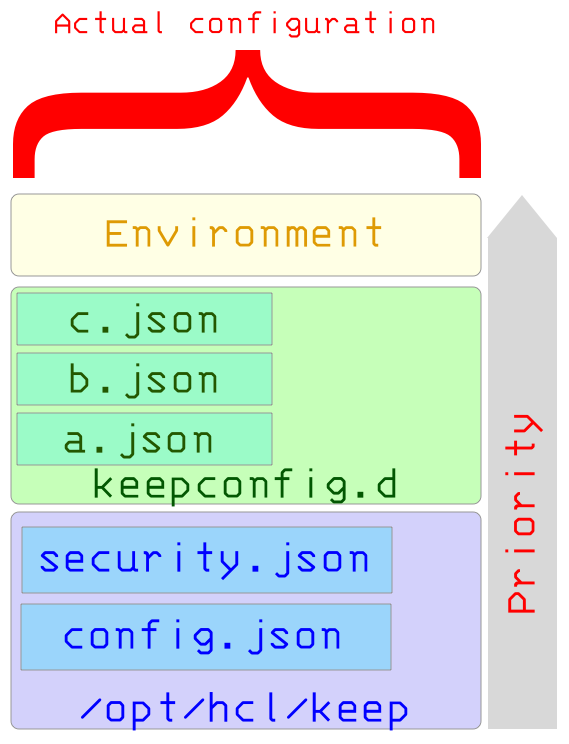Understanding configuration
The configuration follows the concept of an Overlay File System. The base configuration is retrieved from the installation directory or jar files.
When jar files contain a resource /config/config.json, that configuration file is added to total configuration.
Then, it's overlaid with any JSON files in the keepconfig.d directory within the Notes data directory and then finally, with any environment parameters.
Hierarchy

All files contribute JSON, which are overlaid on top of each other. JSON elements with same names get overwritten. Arrays are replaced and not overwritten.
The JSON files in keepconfig.d are processed in alphabetical order. Last entry wins. This processing order allows you, for example, to disable elements temporarily through settings in a z-final-words.json file without impacting the permanent configuration.
For more information, see vert.x overloading rules.
Example
Given the files config.json, a.json and the environment variable PORT=8564, you get the result result.json as shown below:
config.json
{
"PORT": 8880,
"AllowJwtMail": true,
"versions": {
"basis": {
"path": "/schema/openapi.basis.json",
"active": true
}
}
}
a.json
{
"dance": "tango",
"PORT": 1234,
"versions": {
"basis": {
"active": false
},
"special": {
"path": "/schema/openapi.special.json",
"active": true
}
}
}
Merge these 2 files and apply the environment variables.
result.json
{
"PORT": 8564,
"AllowJwtMail": true,
"dance": "tango",
"versions": {
"basis": {
"path": "/schema/openapi.basis.json",
"active": false
},
"special": {
"path": "/schema/openapi.special.json",
"active": true
}
}
}
The actual result can be inspected on the Domino REST API management API, like on a local install.
Important notes
JSON overlay doesn't allow you to remove JSON elements. So, most settings have an
activeparameter that can be set to false in an overlay.